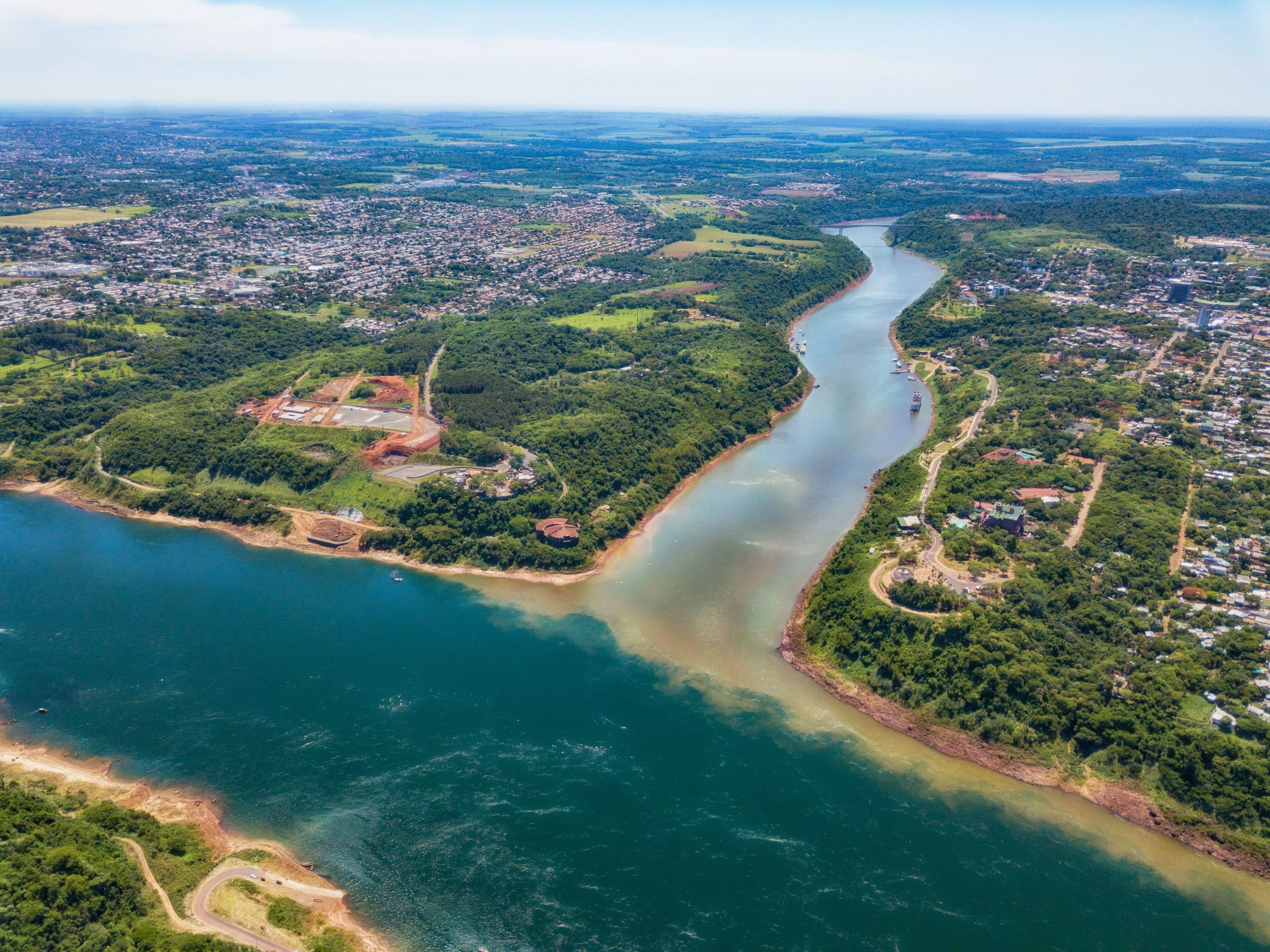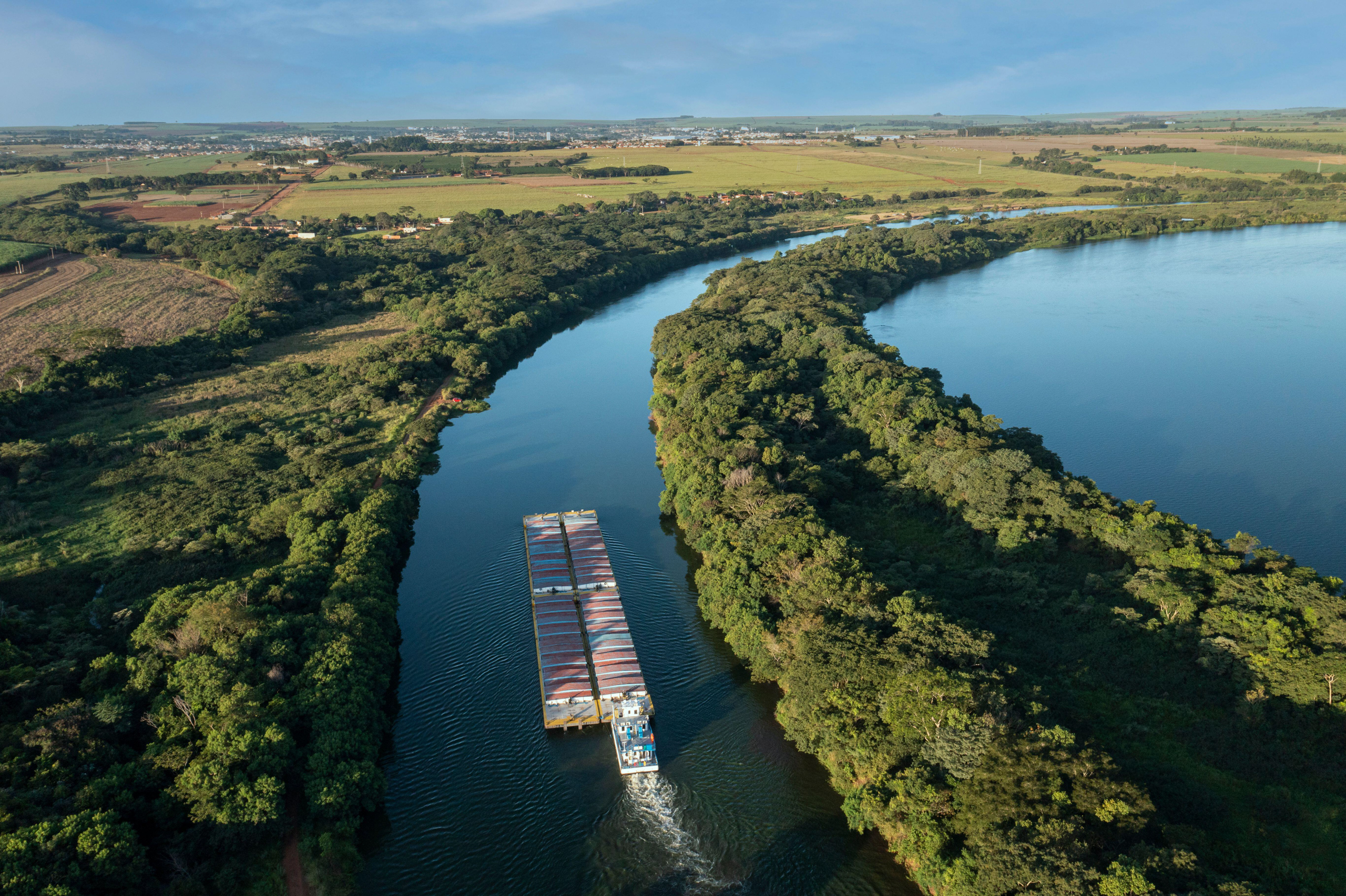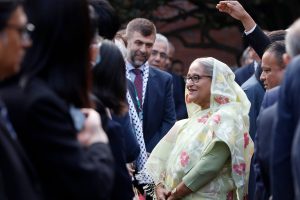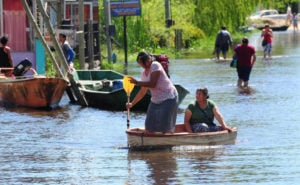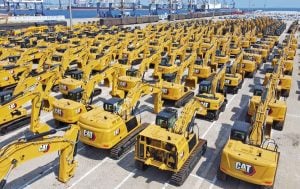Alejo Di Risio is an Argentine film-maker whose work has focused on environmental issues. For his latest project, made with his colleague Franco González, he sought to portray an alternative face to one of South America’s largest trade and export routes: the Paraná-Paraguay waterway.
“Waterway”, Di Risio explains, “is a name that people who live along the river don’t use – it’s the people on top of the ships, who don’t see what they have below, who call it that”.
Flowing over more than 3,400 kilometres of the Paraguay, Paraná and La Plata rivers, the waterway crosses key regions for agriculture and food production in Bolivia, Brazil, Paraguay and Argentina, facilitating trade between them and opening a route for exports to the wider world.
When discussions of the giant waterway arise, it is common to hear how, each year, as many as 100 million tonnes of goods pass along it, on their way to being exported. Receiving less attention, as Di Risio and González point out, are the social and environmental impacts the waterway has brought.
In 2021, the two directors set out to travel along the Paraná River to collect testimonies about the impacts of the waterway. Three years later, their documentary, By the River: The Dispute for the Paraná, has been released, premiering in Argentina last week.
Though long an important route for trade and transit, from the mid-1990s the Paraná-Paraguay waterway began to be industrialised. Private management arrived, and mechanical interventions were made to widen and deepen the beds of its rivers, in hopes of maximising its flow and opening it up to larger ships.
For almost 20 years, the control of the waterway has been in the hands of two companies: the Argentinean-owned Emepa and the Belgian maritime infrastructure firm Jan de Nul. For environmental organisations and coastal dwellers, it was during this time that both the river and their lives changed completely.
That which brought a boom in profits for some, meant a displacement of traditional activities such as artisanal fishing for others. It also had environmental impacts on the river’s wetlands – a situation that Di Risio feels has long been overlooked by companies and governments.
The cost of growth
Julio Cardozo is 48 years old and has been a fisherman since the age of 11. He was born and lives in Ramallo, a town on the banks of the Paraná River and on the border between the provinces of Buenos Aires and Santa Fe. He is also one of the protagonists of the documentary. In conversation with Dialogue Earth, he describes how the river and the islands along its course have changed since he was a child.
Cardozo says that, since the 1990s, hundreds of private ports have sprung up along the river’s edge, where fishers such as himself are unable to dock: “Since that time, they’ve been pushing us out. Nobody ever came to talk to the small-scale fishing sector. And now we can’t even get within 200 metres of the port.”
The fisherman denounces how the dredging of the river has destroyed several fish spawning sites, in addition to the fact that the ever-increasing traffic of bigger and bigger boats generates waves that are speeding up the erosion of the shoreline: “One passes by every hour, or every half hour – sometimes three or four together.”
The economist Sergio Arelovich, another protagonist of the documentary, also talks of the waterway bringing changes to the shape of the river and its islands. He says that during the drive towards privatisation, the national dredging fleet was abandoned, and the door opened to companies that he says were never subject to much regulation. “They caused irreparable damage to the coastal area and altered the balance of plant and animal species,” he adds.
On top of these challenges, between 2020 and 2023, Argentina was hit by a severe drought driven by La Niña weather phenomenon, which added another layer of complexity. “It brought a decrease in the harvest and a reduction in the flows of the Paraná, which led to a decrease in the volumes transported along it,” Arelovich says.
For Di Risio, the hardest impacts of the drought were felt by fishers and island dwellers: “We filmed during the lowest water levels in the last 70 years. We saw how it became impossible to move between the branches of the river, and how the modifications made to the waterway had intensified the differences [in access] between commercial boats and the barges used by the inhabitants of the area.”
The future of the waterway
In 2021, the concession for the management of the Paraná-Paraguay waterway expired, and the government of then-president Alberto Fernández announced that it would open a new tender. However, this did not materialise, and its management ended up provisionally in the hands of the state.
Argentina’s new president, Javier Milei, has now promised to carry out the tender. On 30 April, Mariano Mirotti, secretary of concessions in the national infrastructure department, confirmed that an international call will be launched soon.
Part of the aim of the new tender is to deepen channels of the Paraná River to allow even larger vessels to reach the ports of Santa Fe with a larger cargo.
In recent years, five companies have expressed interest in the concession: the Belgian companies Dredging International and, once more, Jan de Nul; the Dutch companies Boskalis and Van Oord; and Shanghai Dredging.
The latter is one of the subsidiaries of the majority state-owned China Communications Construction Company, which has overseen more than 50 large infrastructure projects in Latin America alone.
China has in recent years become the main importer of Argentine soybeans and meat. In 2022, 92% of soybeans and 57% of meat exported from Argentina were reportedly sent there.
For Arelovich, signs of the future of the waterway can be seen by looking back once more to the mid-1990s, when the state decided to privatise its administration. “They didn’t industrialise anything, they only exported 100% of what they extracted,” he says. “Under Javier Milei’s government, I don’t see any plans for regulation, except to guarantee the reproduction of that business model.”
By the Paraná: The Dispute for the River (Por el Paraná: La disputa por el río) is screening at the Gaumont cinema in Buenos Aires, Argentina, until 16 May, and is streaming at cine.ar.
